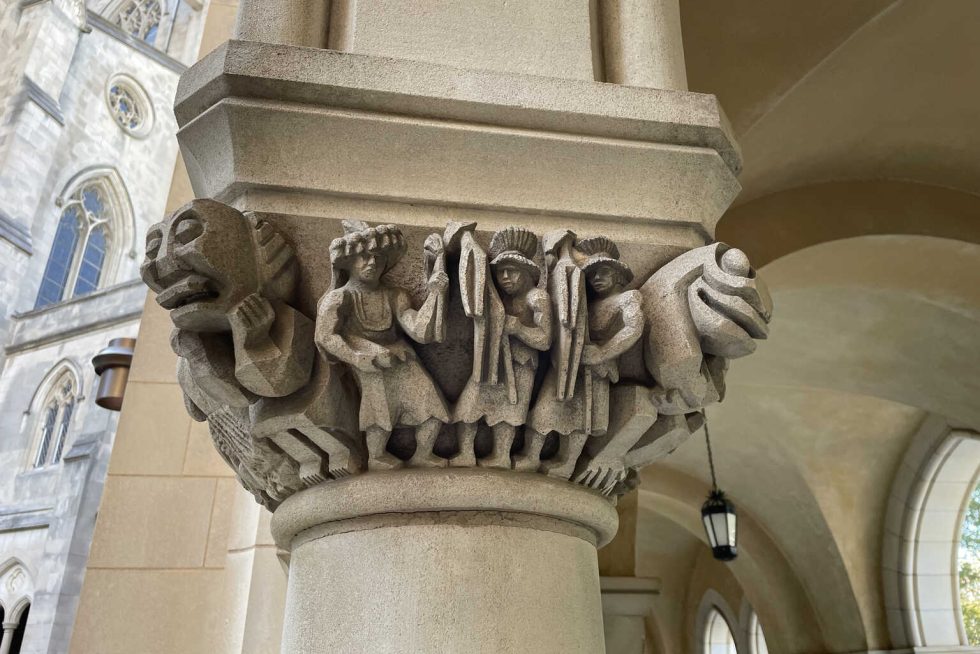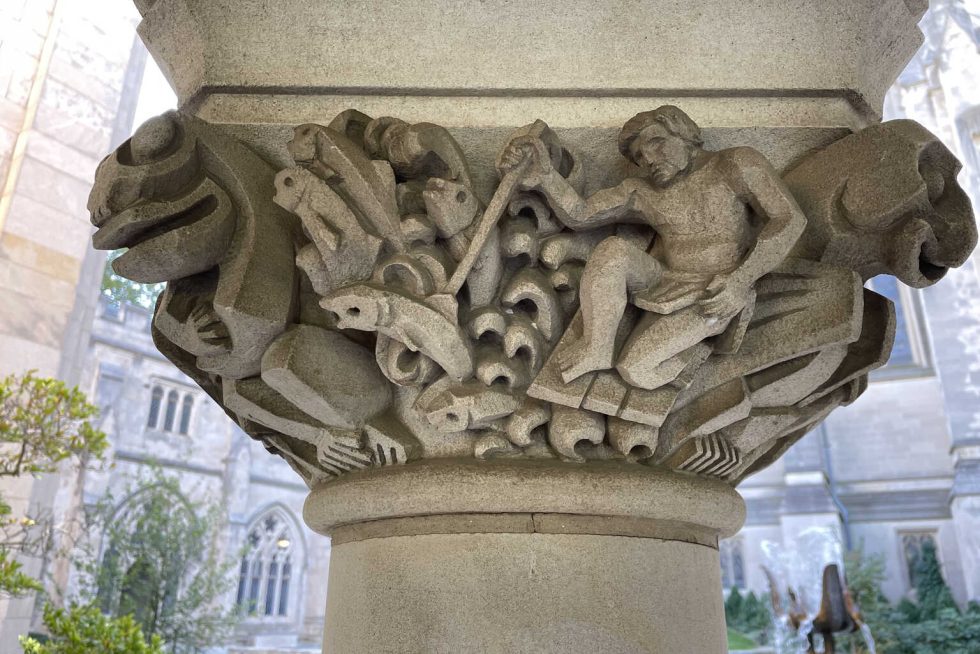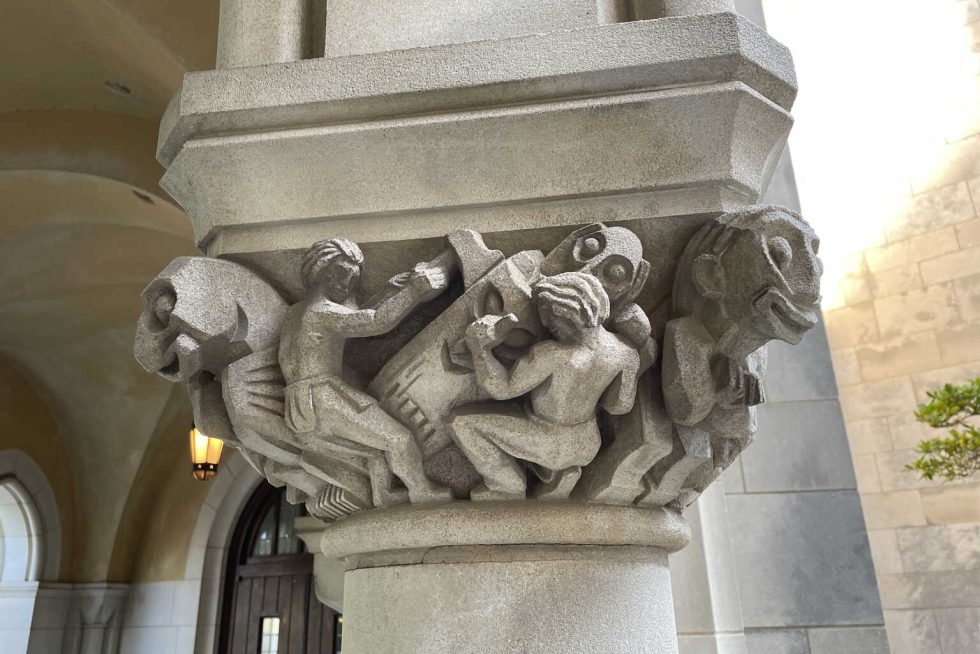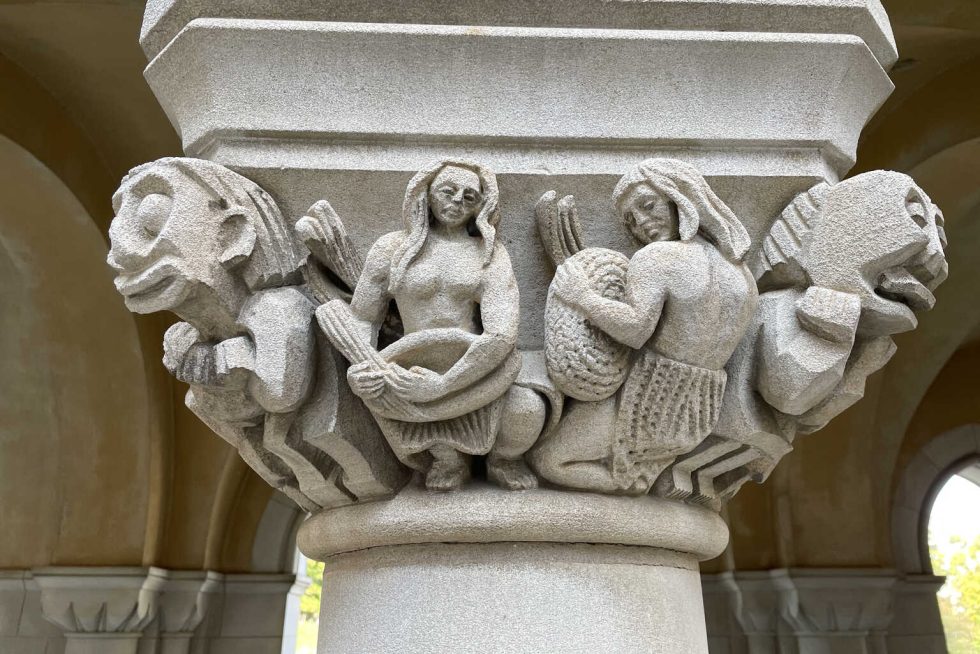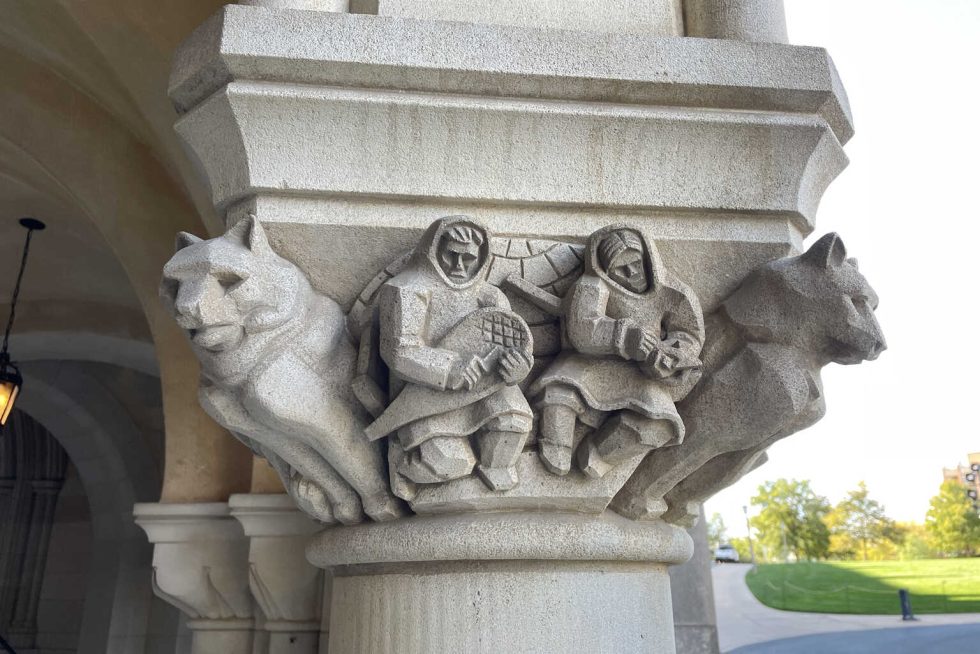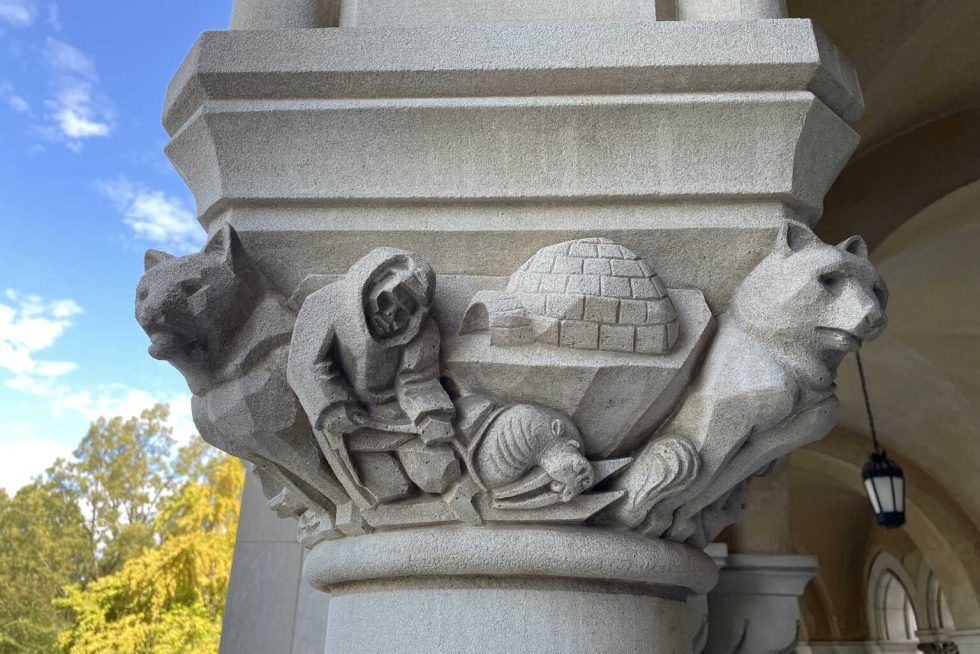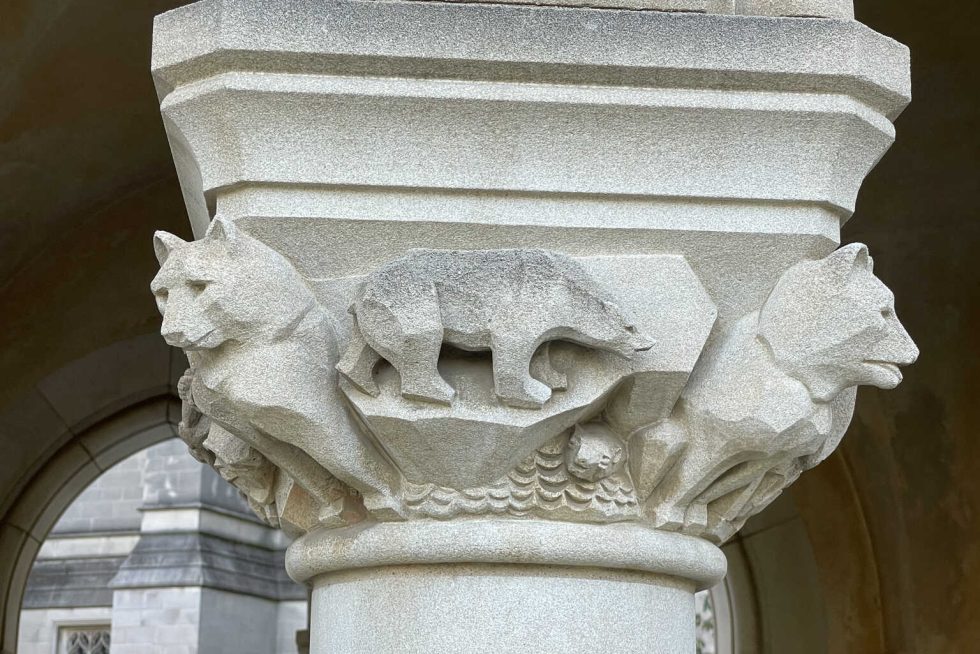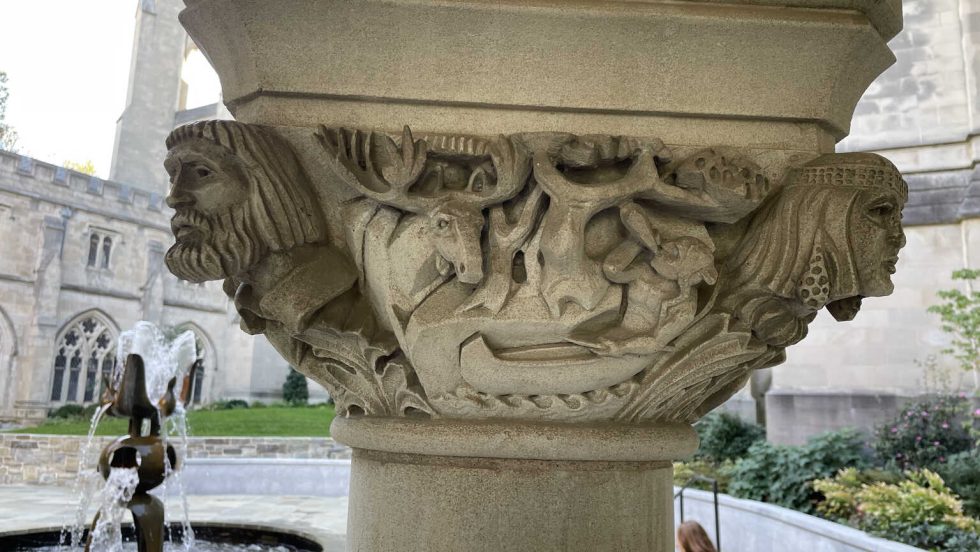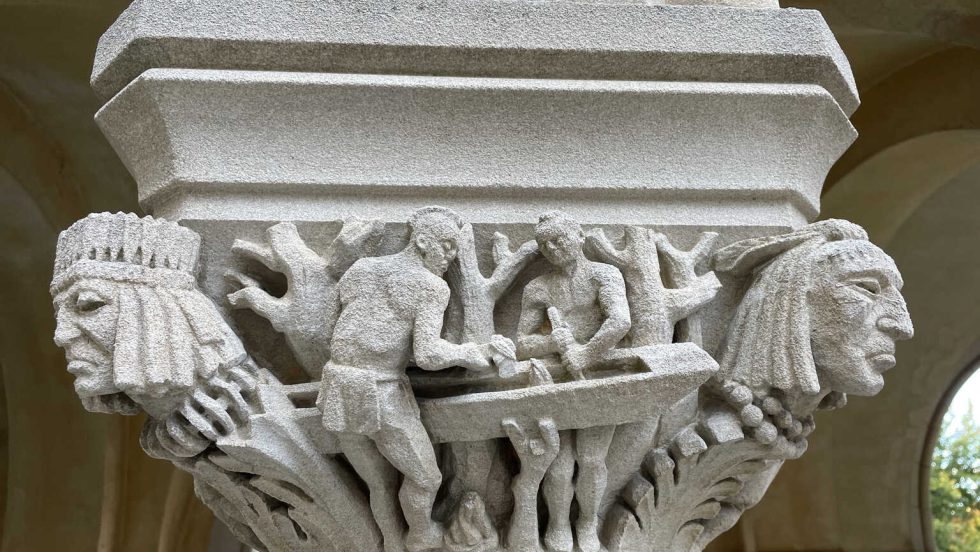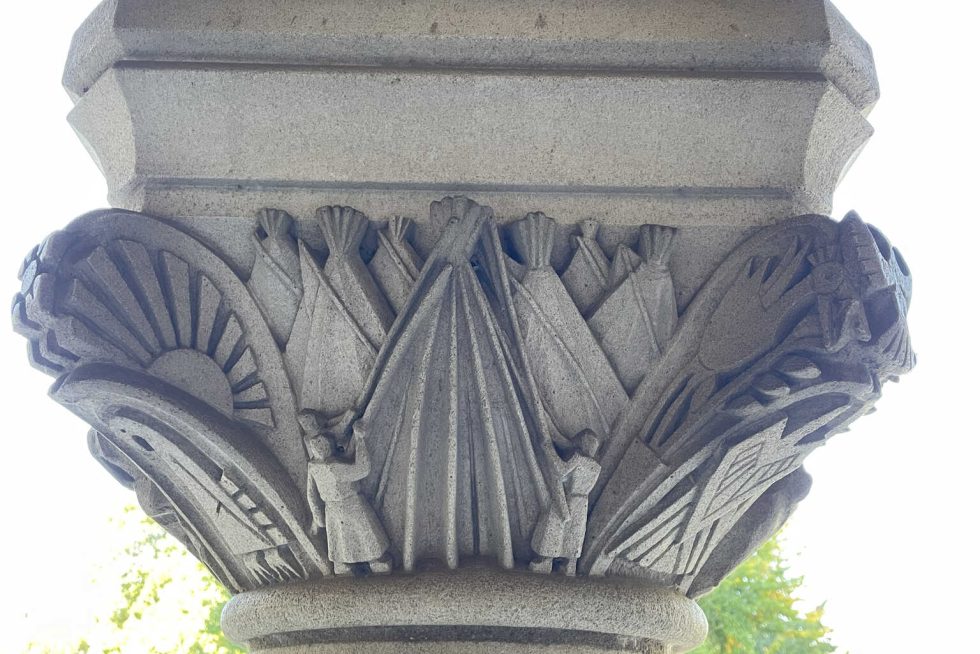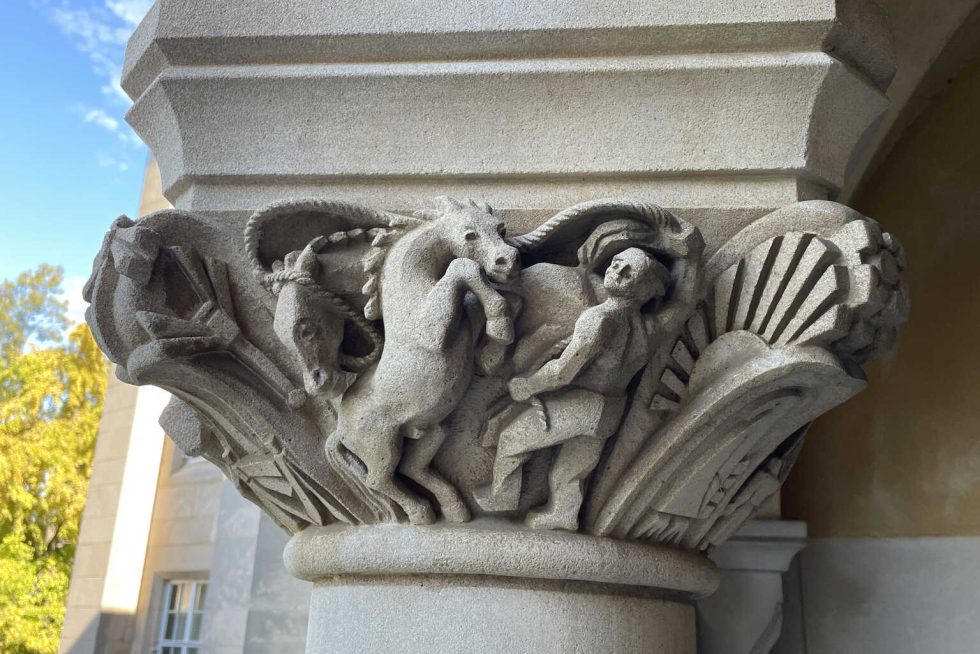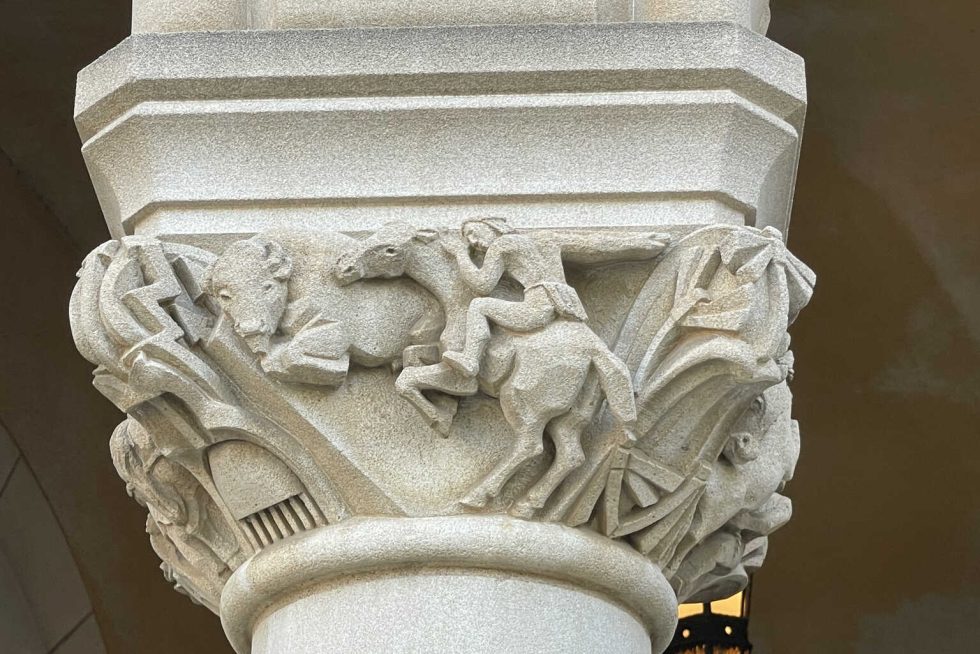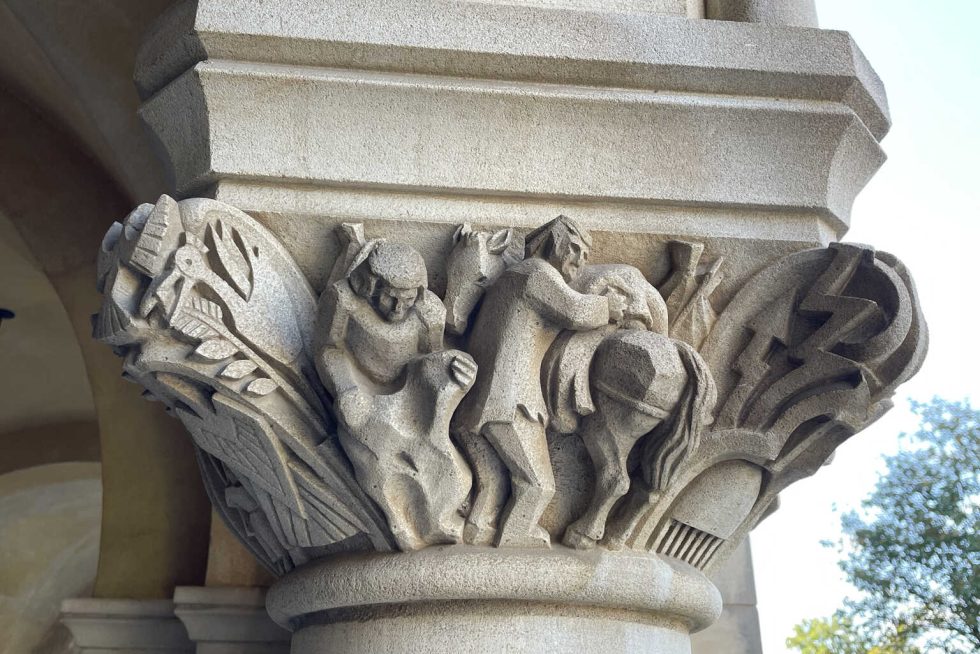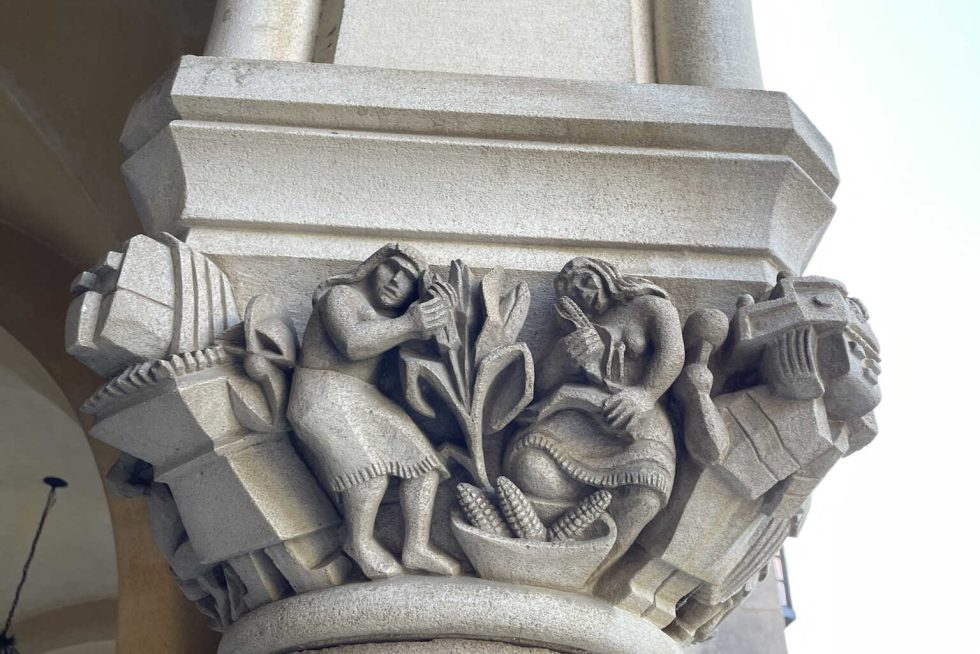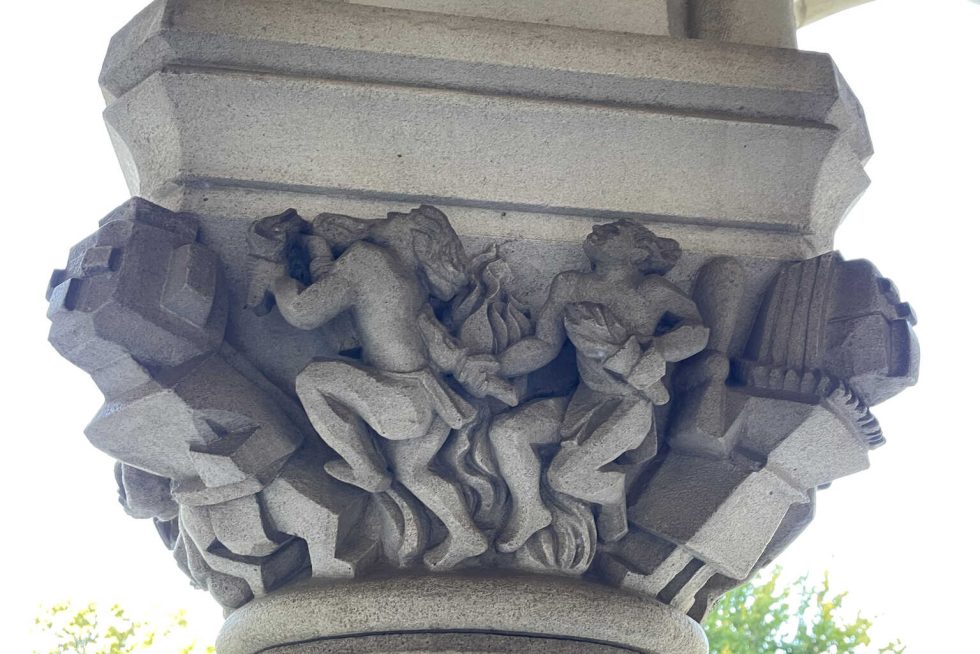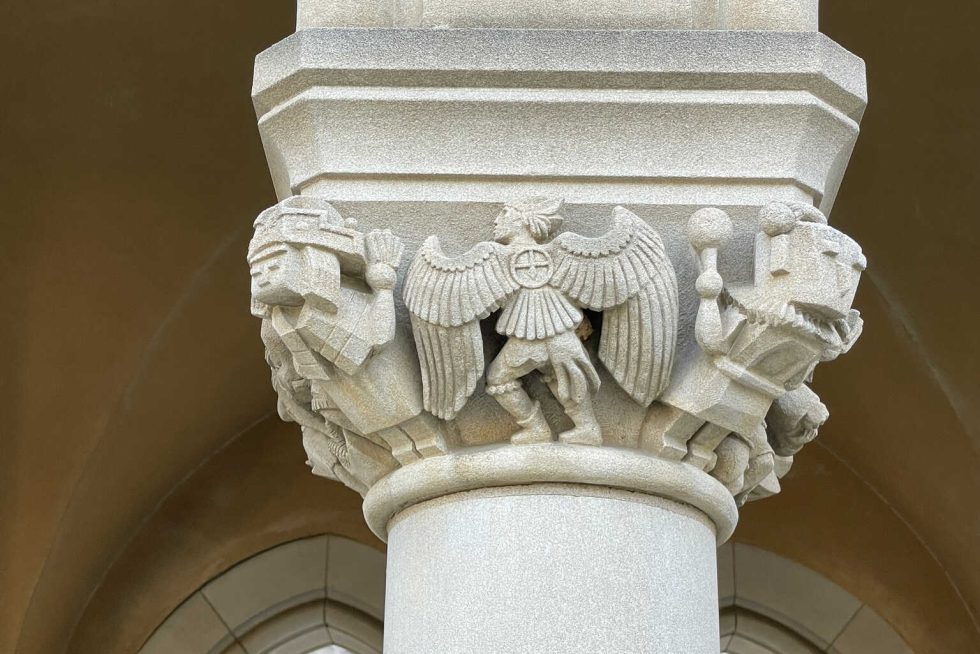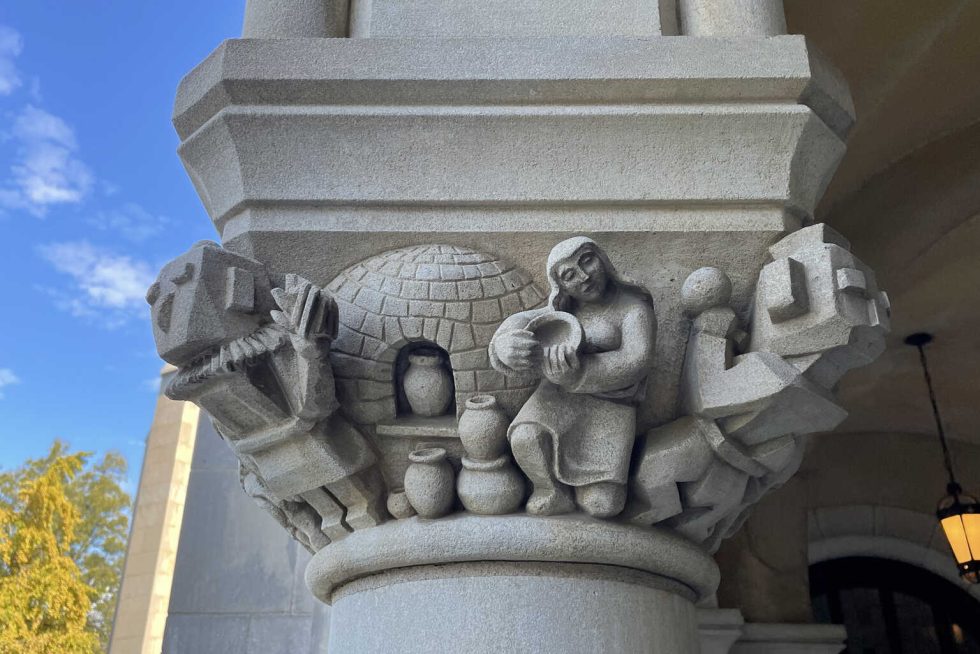Photos: Celebrating Native American Heritage Month
In honor of Native American Heritage Month, we're taking a closer look at some intricate carvings that depict the major tribes of North America.
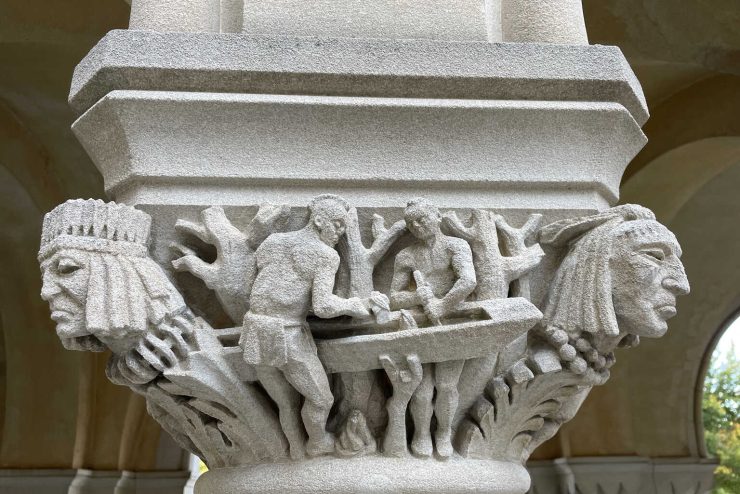
But before we get started, it’s important to acknowledge with respect the history, spirituality, and culture of the peoples on whose traditional territory we are located, specifically the Piscataway and Nacotchtank (Anacostan) peoples. We make this acknowledgement mindful of the traumatic events and the ongoing forces of systemic racism and oppression that forced native peoples from their lands. We continue our commitment to learning, growing, and finding a new way forward for meaningful, mutual healing.
The carvings that honor Native American people groups have a curious history, and in the interest of being transparent, we’re not entirely sure when they were added. Piecing together the clues, we think it was sometime in the 1960s or 1970s. Heinz Warneke was the sculptor.
Warneke was born in Germany in 1895 and studied at the Berlin Kunstgewerbeschule. During World War I, he was a member of the German Monuments Commission before emigrating to New York in 1923. He spent five years (1927-1932) in Paris, creating a sculptural style that combined social realism, art-deco wit and primitivism, and upon his return to the United States undertook a number of commissions for the WPA.
He became known for his animal figures, receiving steady commissions on into the 1940s and 1950s including an elephant group for the Philadelphia Zoo and the Nittany Lion (1942) for the campus of Pennsylvania State University. In the 1960s he carved a granite sculpture, Prodigal Son, for the National Cathedral in addition to doing the tympanum (a representation of the Last Supper) and clerestory decoration.
As the story goes, the Native American carvings were given by then-Dean Francis B. Sayre, Jr., part of an inheritance from his step-grandmother, First Lady Edith Wilson. The first lady traced her family heritage to the legendary Pocahontas, and Dean Sayre wanted to honor the first lady and her Native American heritage.
The carvings are located on the capitals of columns that surround the Cathedral Garth. The set of five depicts Native Americans from the Pacific Northwest, the Arctic, the Great Plains, the Southwest and the Northeast. The intricate carvings depict typical activities of the groups, including their living and agriculture, their crafts, their social and religious traits, and their hunting.
Here’s what we know about each:
Pacific Northwest: Basket weaving, the Deer Dance, totem pole carving and salmon fishing.
The Arctic: An igloo and dogsled, making a shoeshoe and a harpoon, a polar bear, and ice fishing. Sled dogs are shown at each corner.
The Northeast: Moose hunting, sacred mound building, smoking the sacred pipe and building canoes.
The Great Plains: Teepee building, the fur trade, lassoing a wild horse and a buffalo hunt.
The Southwest: Harvesting maize, pottery making, the Eagle Dance, the Fire Dance. Kachina figures are represented at each corner.
It’s important to note that the carvings of the Northeast tribes contain the story of Pocahontas, the young native woman whose true story has become mythologized by Disney and pop culture. The carvings reflect the traditional storyline that she risked her life to rescue English settler John Smith at Jamestown. We now know the story is likely more complicated than that. Like other figures depicted in the Cathedral’s iconography, we fully acknowledge that not all depictions portray all parts of the story, and there is always more to learn, and always room to grow.
Check out the gallery below to see the carvings in detail. Special thanks to Chuck Ludlam, and the Rev. Michele Morgan and the good people of St. Mark’s Capitol Hill.
